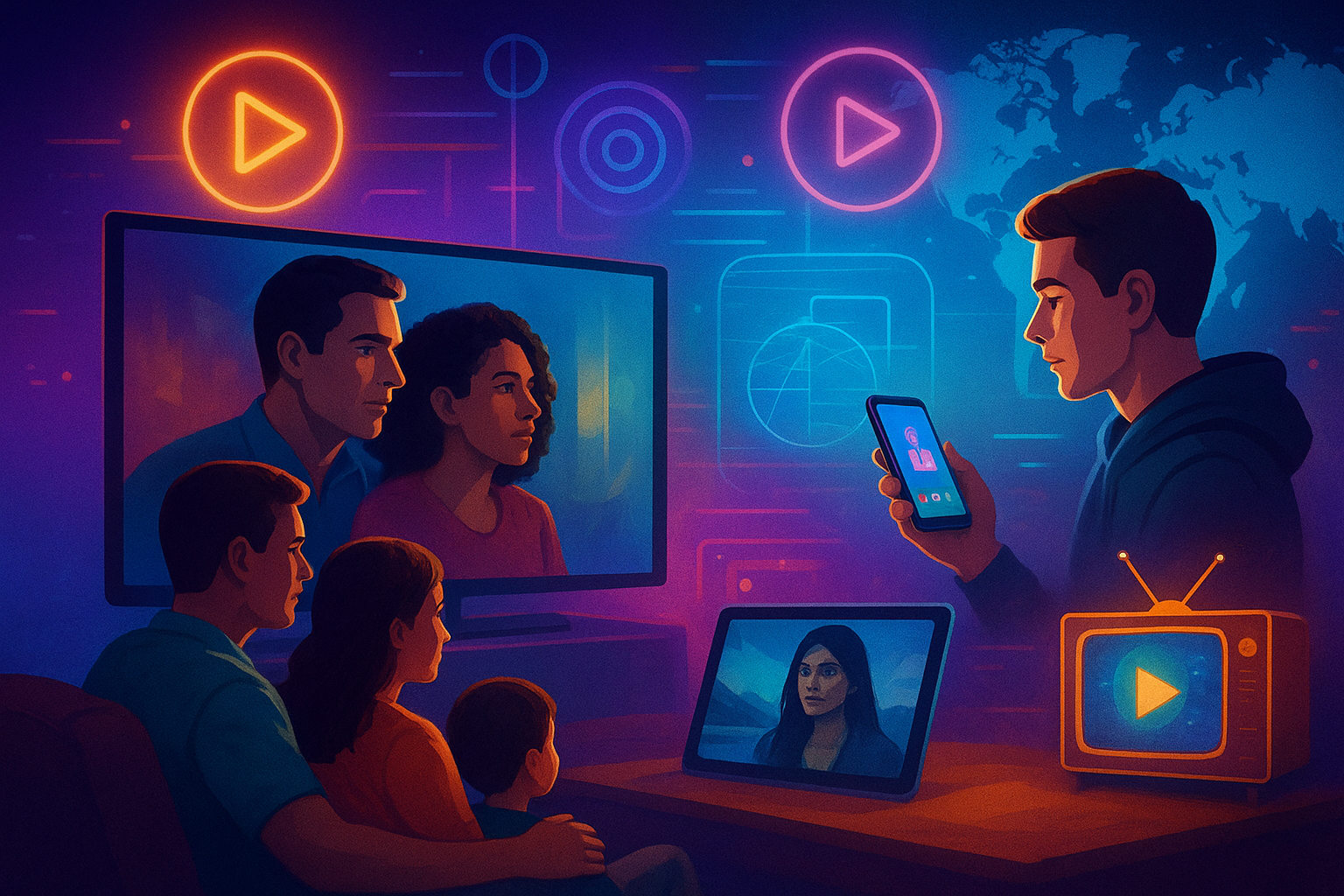Not long ago, the television schedule dictated what people could watch and when. Friday nights might mean sitcoms, Sunday nights meant dramas, and the family gathered around one screen to share the experience. Fast forward to today, and the entertainment landscape looks completely different. The rise of online streaming platforms has not only changed viewing habits but also reshaped the very foundation of the industry.
This shift is more than just convenience; it has sparked a cultural transformation that affects how stories are told, how artists reach audiences, and how viewers interact with content. Let’s take a closer look at the streaming revolution, its impact, and where it may be heading.
The Fall of Appointment Television
Traditional television was built on appointment viewing—audiences tuned in at a scheduled time, or they missed out. While recording devices and DVD collections offered some flexibility, the system was still rigid compared to today’s standards.
Streaming platforms broke this cycle. They handed control to the viewer, allowing people to watch entire seasons in one sitting or pause and resume whenever they wanted. This change alone altered not just viewing habits, but storytelling itself. Writers began crafting shows with binge-watching in mind, creating tighter cliffhangers and interconnected story arcs.
The Rise of On-Demand Culture
Streaming is more than a delivery method—it reflects a cultural mindset. People no longer want to wait; they want content on their terms. This demand for immediacy has influenced every corner of entertainment, from music and gaming to live sports.
Music services now offer instant access to millions of tracks, while video games increasingly come with cloud-based libraries. Even sports leagues are adjusting by offering streaming packages that let fans watch highlights or games at flexible times.
This on-demand culture doesn’t just serve audiences; it also pressures creators and networks to deliver content faster and more frequently, sparking debates over quality versus quantity.
Global Reach and Cultural Exchange
One of the most powerful aspects of streaming is its ability to break geographic barriers. A Korean drama can trend in Europe, a Spanish thriller can dominate in the U.S., and an Indian film can attract fans worldwide—all within days of release.
This global exposure enriches cultural exchange, allowing audiences to experience storytelling traditions and themes outside their own background. It also challenges the dominance of Hollywood, creating a more diverse and competitive landscape. Shows like Money Heist, Squid Game, and Dark prove that great stories resonate across borders.
The Economics of Streaming
Behind the scenes, the financial structure of streaming is complex. Subscription fees, advertising models, and licensing agreements all play a role. Unlike traditional television, where advertisers carried much of the cost, streaming services often rely on direct subscriptions. This has led to a subscription boom—Netflix, Disney+, Amazon Prime Video, Hulu, Apple TV+, and countless others competing for monthly fees.
But with so many platforms, audiences face “subscription fatigue.” Paying for multiple services adds up quickly, and many viewers are forced to choose. As a result, companies are experimenting with ad-supported tiers or bundled packages. The economics of streaming remains in flux, and the competition shows no sign of slowing.
The Impact on Film and Television Production
Streaming platforms have changed not just how we watch, but how stories are made. Budgets for streaming originals often rival or surpass those of traditional blockbusters. For instance, major series from Netflix or Amazon come with cinematic visuals and massive production costs.
At the same time, these platforms give smaller creators a stage. Independent filmmakers and niche storytellers now have opportunities to reach global audiences without going through traditional studio systems. This has democratized content creation, though it also means the market is crowded with options, making visibility harder to achieve.
The Binge-Watching Phenomenon
One of the most noticeable cultural changes is binge-watching. Instead of waiting a week for the next episode, viewers devour entire seasons over a weekend. While this creates excitement and deep engagement, it also has downsides.
Stories that once sparked week-long discussions between episodes now fade more quickly as audiences rush through them. Shows may dominate cultural conversation for a short burst, only to disappear from memory within weeks. This has led some platforms, like Disney+, to return to weekly releases, aiming to extend audience engagement.
Challenges Facing Streaming Platforms
The streaming boom comes with its own hurdles:
-
Oversaturation – With so many platforms and so much content, it’s nearly impossible for viewers to keep up. Some shows are buried under the weight of endless options.
-
Piracy – Despite legal access, piracy continues, especially as subscription costs rise.
-
Sustainability – Constant production of high-budget shows and films is expensive, and not all platforms can sustain such investments.
-
User Experience – Fragmentation across services makes discovery harder. Viewers often struggle to remember where a specific show is available.
The Future: Interactive and Immersive Entertainment
What comes next? Several trends hint at the future of entertainment in the streaming era.
-
Interactive Storytelling – Experiments like Black Mirror: Bandersnatch allow viewers to influence storylines, merging gaming and television.
-
Virtual Reality Integration – VR may eventually offer immersive viewing experiences, turning passive watching into interactive exploration.
-
Personalized Content – Algorithms already recommend shows, but future systems may tailor not just recommendations, but even the way stories unfold, based on viewer preferences.
-
Hybrid Models – Expect more ad-supported tiers and bundled packages, balancing affordability with access.
A Cultural Shift That’s Here to Stay
Streaming platforms are not just another trend—they are the new backbone of entertainment. The way stories are produced, distributed, and consumed has fundamentally changed. Viewers have more choice than ever, but also face new challenges in navigating the endless sea of options.
What’s certain is that the streaming revolution has democratized access, amplified cultural diversity, and forced traditional media to adapt. Whether it’s the next global hit series or a small independent film finding its audience, streaming ensures that storytelling will continue to evolve in exciting, unpredictable ways.
Conclusion: More Than Just Watching
Entertainment has always adapted to technology—from radio to television to the internet. Streaming represents not just another platform, but a cultural shift in how people connect with stories. It has blurred borders, expanded creative opportunities, and put control directly into the hands of audiences.
As the wars between platforms continue and new technologies emerge, one truth remains: storytelling will always find a way to thrive. What changes is not the love for stories, but the ways we share and experience them.




